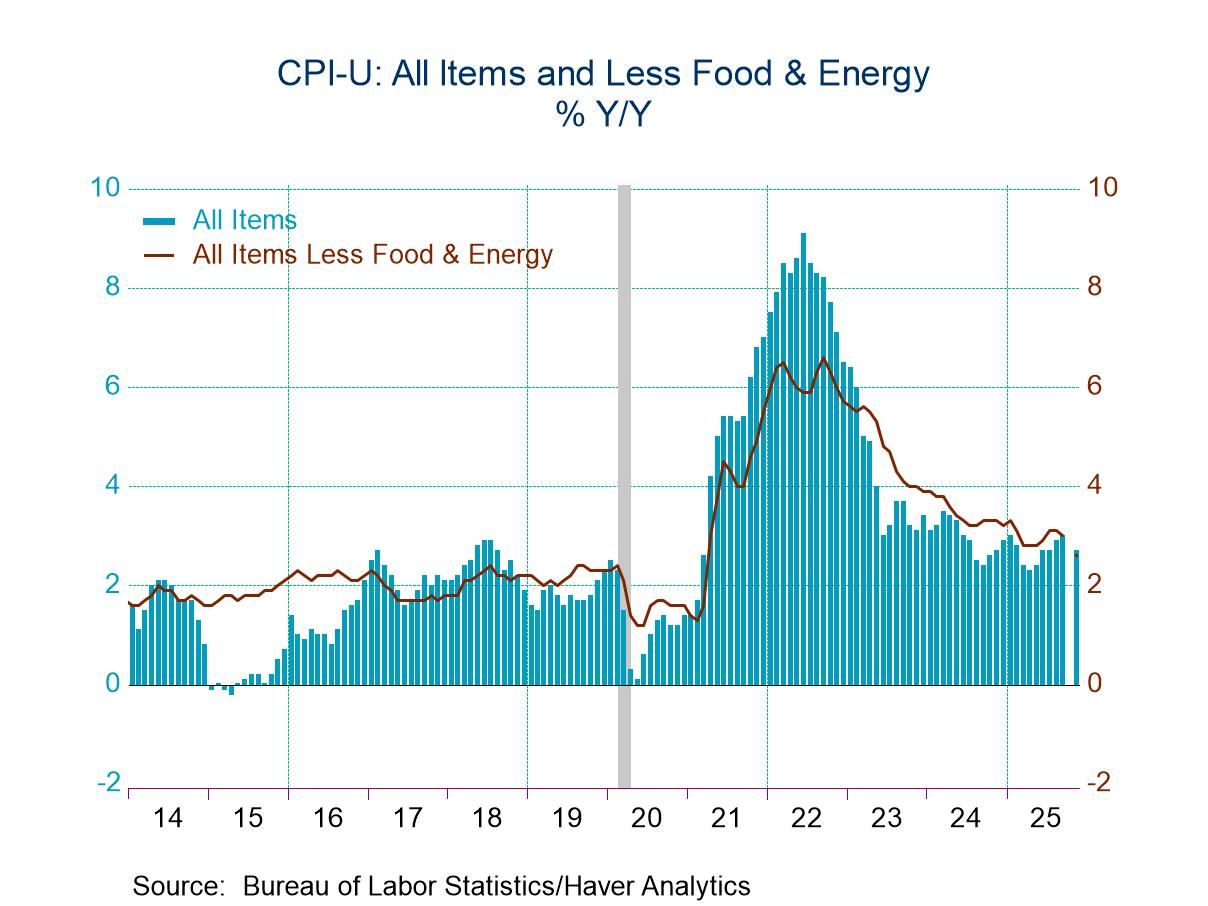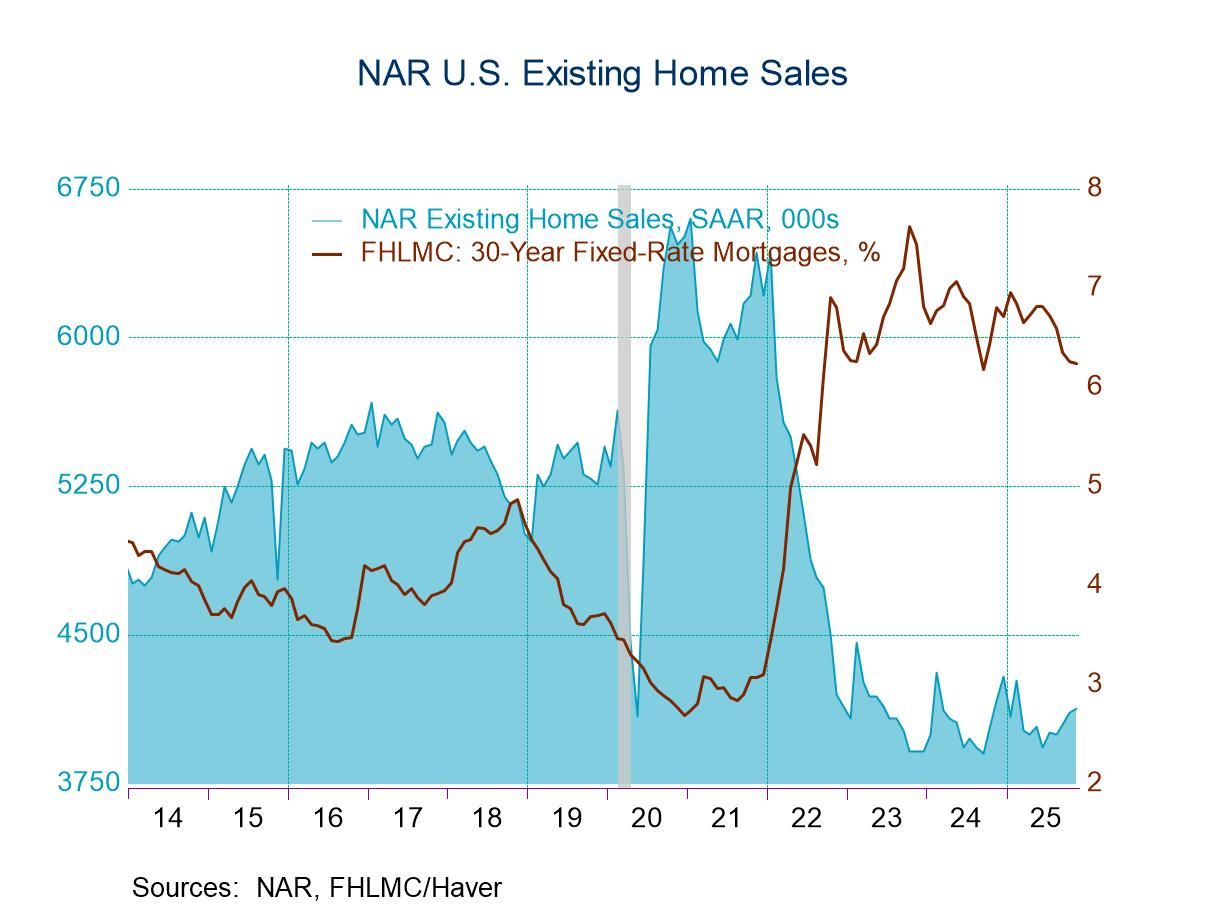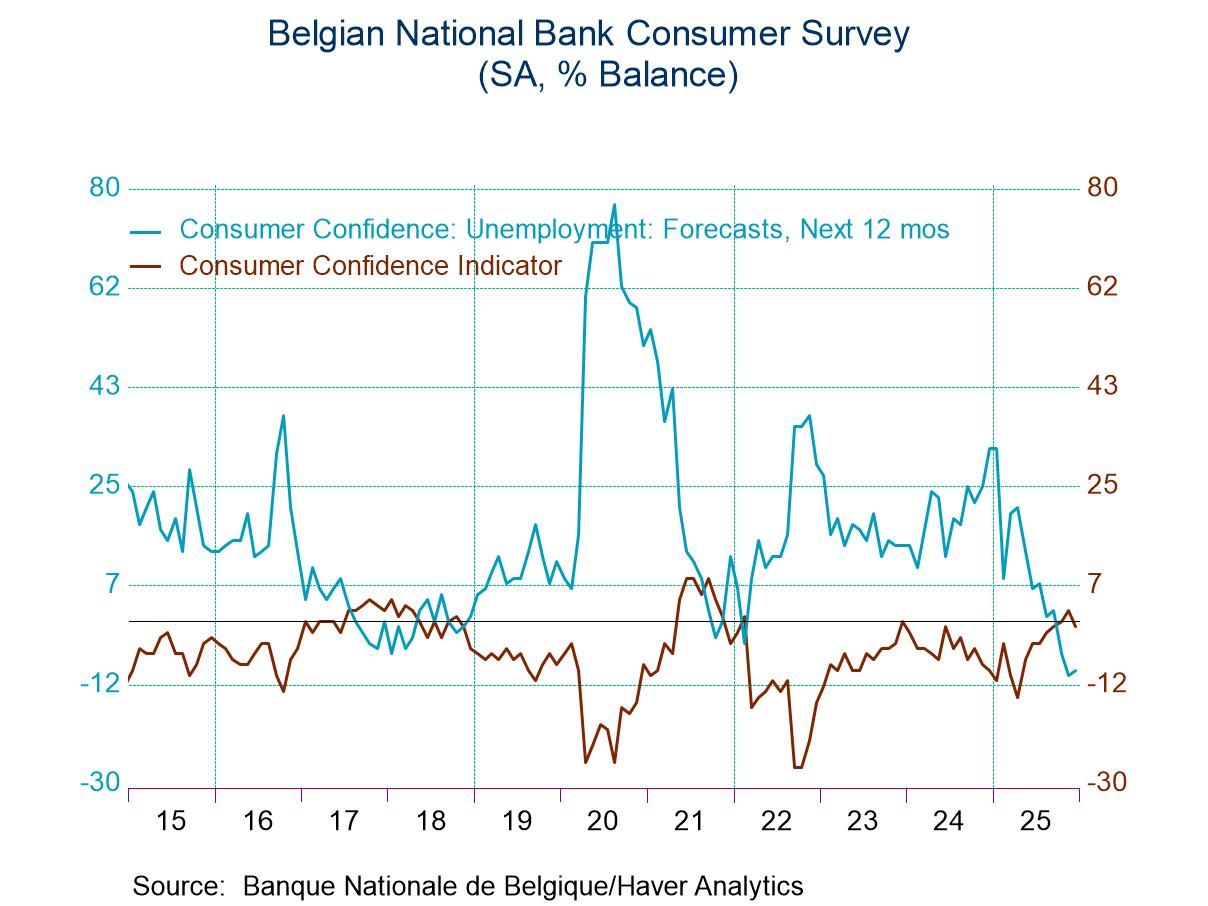 Global| Aug 15 2018
Global| Aug 15 2018U.S. Retail Sales Increase Firmly
by:Tom Moeller
|in:Economy in Brief
Summary
Total retail sales rose 0.5% (6.4% y/y) during July following a 0.2% June gain, revised from 0.5%. A 0.2% increase had been expected in the Action Economics Forecast Survey. Excluding motor vehicles and parts, retail sales increased [...]
Total retail sales rose 0.5% (6.4% y/y) during July following a 0.2% June gain, revised from 0.5%. A 0.2% increase had been expected in the Action Economics Forecast Survey. Excluding motor vehicles and parts, retail sales increased 0.6% (7.3% y/y) after a 0.2% gain, revised from 0.4%. A 0.4% rise had been expected. A measure of the underlying pace of retail spending is nonauto sales growth excluding gasoline and building materials. These sales increased 0.5% in July following a 0.1% dip, revised from no change.
Sales patterns amongst categories were mixed last month. Clothing & accessory store sales rebounded 1.3% in July (5.4% y/y) following a 1.6% decline. Also strong were sales of nonstore retailers, rising 0.8% (11.3% y/y) after a 0.7% gain. General merchandise store sales rose 0.7% (1.8% y/y) and reversed a 0.7% decline in June. Electronics & appliance store sales ticked 0.1% higher (4.2% y/y) after a 0.4% rise. Gasoline station sales improved 0.8% (21.6% y/y) after a 0.3% gain.
Building materials & garden
equipment store sales held steady (5.8% y/y) after a 0.1% uptick. Weakening
were sales at furniture & home furnishings stores which declined 0.5% (+3.9%
y/y) following a 0.3% rise. Sporting goods, hobby, book & music stores sales
were off 1.7%, down for the fourth straight month.
Sales of nondiscretionary items also were mixed last month.
Food & beverages store sales improved 0.6% (3.6% y/y) following no change.
Health & personal care product store sales, however, decreased 0.4% (6.2%
y/y) after four consecutive months of strong increase. Eating out remained in vogue last month as restaurant &
drinking establishment sales gained 1.3% (9.1% y/y), the fourth strong increase
in the last five months. The retail sales data can be found in Haver's USECON
database. The Action Economics forecast is in the AS1REPNA database.
Retail Spending (% chg)
Jul
Jun
May
Jul Y/Y
2017
2016
2015
Total Retail Sales & Food Services
0.5
0.2
1.2
6.4
4.3
3.1
2.6
Excluding Autos
0.6
0.2
1.4
7.3
4.3
2.7
1.4
Non-Auto Less Gasoline & Food
Services
0.5
-0.1
0.8
4.8
3.4
3.0
3.5
Retail Sales
0.4
0.0
1.0
6.1
4.5
2.8
1.9
Motor Vehicle & Parts
0.2
0.1
0.6
3.1
4.3
4.6
7.2
Retail Less Autos
0.5
-0.0
1.2
7.0
4.5
2.2
0.4
Gasoline Stations
0.8
0.3
2.9
21.6
8.8
-5.7
-17.6
Food Service & Drinking Places
Sales
1.3
1.6
2.8
9.1
2.7
5.6
8.2
Empire State Manufacturing Index Continues To Improve
by Tom Moeller August 15, 2018
The Empire State Manufacturing Index of General Business Conditions increased to 25.6 in August, its highest level since October. The Action Economics Forecast Survey expected a reading of 20.0. These data, reported by the Federal Reserve Bank of New York, reflect business conditions in New York, northern New Jersey and southern Connecticut.
Haver Analytics calculates a seasonally adjusted index that is comparable to the ISM series. The calculated figure rose to 56.6, from 55.2 but that remained below the June high of 58.2. During the last ten years, the index had a 68% correlation with the q/q change in real GDP.
Most of the components of the Empire State Survey improved this month. The shipments, unfilled orders, inventories and the delivery times readings rose. The new orders fell modestly, however, for a second month.
The number of employees series also fell for a second month, but remained up sharply from its January low. During the last ten years, there has been a 77% correlation between the employment index and the m/m change in factory sector payrolls. A lessened 20% of respondents reported increased employment while a stable 7% reported a decease. The employee workweek reading improved moderately but remained well below its April high.
The prices paid index nudged higher following sharp declines in the prior two months. Forty-six percent of respondents indicated increased prices, while just one percent reported a decline. Prices received fell to the lowest level since December.
The series measuring expectations of business conditions in six months improved following a sharp decline in July.
The Empire State figures are diffusion indexes, which are calculated by subtracting the percent of respondents reporting declines from those reporting gains. The data are available in Haver's SURVEYS database. The ISM-adjusted headline index dates back to 2001. The Action Economics Forecasts can be found in Haver's AS1REPNA database.
| Empire State Manufacturing Survey | Aug | Jul | Jun | Aug'17 | 2017 | 2016 | 2015 |
|---|---|---|---|---|---|---|---|
| General Business Conditions (Diffusion Index, %, SA) | 25.6 | 22.6 | 25.0 | 24.2 | 16.1 | -2.6 | -2.3 |
| General Business Conditions Index (ISM Adjusted, >50=Increasing Activity, SA) | 56.6 | 55.2 | 58.2 | 54.0 | 54.6 | 48.2 | 48.8 |
| New Orders | 17.1 | 18.2 | 21.3 | 20.9 | 14.6 | -0.8 | -5.6 |
| Shipments | 25.7 | 14.6 | 23.5 | 14.1 | 15.9 | 1.9 | 4.0 |
| Unfilled Orders | 11.1 | 0.0 | 9.3 | -4.7 | 1.9 | -8.8 | -10.5 |
| Delivery Time | 10.4 | 6.0 | 13.2 | 5.4 | 6.1 | -4.8 | -5.3 |
| Inventories | 0.0 | -4.3 | 5.4 | -3.1 | 1.5 | -9.6 | -7.1 |
| Number of Employees | 13.1 | 17.2 | 19.0 | 2.6 | 8.3 | -5.1 | 2.3 |
| Average Employee Workweek | 8.9 | 5.6 | 12.0 | 4.4 | 4.9 | -5.2 | -4.8 |
| Prices Paid | 45.2 | 42.7 | 52.7 | 31.0 | 29.0 | 15.7 | 8.8 |
| Prices Received | 20.0 | 22.2 | 23.3 | 6.2 | 11.0 | 0.7 | 1.2 |
| Expectations 6 Months Ahead | 34.8 | 31.1 | 38.9 | 44.0 | 42.6 | 29.0 | 30.3 |
U.S. Business Inventories Rise Moderately; Sales Strengthen
by Tom Moeller August 15, 2018
Total business inventories increased 0.4% (4.4% y/y) during May following a 0.3% April increase. Total business sales strengthened 1.4% (8.6% y/y), following a 0.6% gain. The inventory-to-sales ratio slipped to 1.34. It peaked early in 2016 at 1.43.
Retail inventories increased 0.4% (2.2% y/y) in May, the same as during April. Auto inventories grew 0.9% (1.9% y/y) after a 0.8% rise. Non-auto retail inventories edged 0.1% higher (2.4% y/y) following a 0.2% increase. General merchandise inventories rose 0.3% (0.9% y/y) after a 1.0% surge. In the department store sector, inventories edged 0.2% higher (-3.2% y/y) following a 0.7% rise. Building materials inventories gained 0.7% (6.1% y/y) after a 0.6% increase, while clothing store inventories fell 0.7% (-0.8% y/y), down for the third straight month. Inventories of furniture, electronics and appliances declined 0.9% (-0.7% y/y), the fourth decline this year. As reported last week, wholesale inventories increased 0.6% (5.9% y/y) following a 0.1% uptick. Factory sector inventories rose 0.2% (5.2% y/y) following a 0.4% gain.
Retail sales increased 1.1% in May (6.5% y/y) with non-auto sales up 1.2% (7.1% y/y) after a 0.5% rise. Wholesale sector sales increased 2.5% (11.8% y/y) after improving 1.4%. Shipments from the factory sector rose 0.6% (7.3% y/y) following a 0.1% uptick.
The inventory-to-sales (I/S) ratio in the retail sector slipped to 1.43 in May, down sharply from the levels averaged during the prior two years. The non-auto I/S ratio declined to 1.20, its lowest level since early-2012. The ratio peaked at 1.29 early in 2016. The wholesale sector I/S ratio fell sharply to 1.24, its lowest level since November 2014. The manufacturing sector I/S ratio held steady for the third month at 1.35, its lowest point in three years.
The manufacturing and trade data are in Haver's USECON database.
| Manufacturing & Trade | Jun | May | Apr | Jun Y/Y | 2017 | 2016 | 2015 |
|---|---|---|---|---|---|---|---|
| Business Inventories (% chg) | 0.4 | 0.3 | 4.4 | 3.5 | 1.8 | 1.7 | |
| Retail | 0.4 | 0.4 | 2.2 | 2.4 | 4.1 | 4.9 | |
| Retail excl. Motor Vehicles | 0.1 | 0.2 | 2.4 | 2.3 | 1.9 | 3.9 | |
| Merchant Wholesalers | 0.6 | 0.1 | 5.9 | 3.6 | 2.2 | 1.2 | |
| Manufacturing | 0.2 | 0.4 | 5.2 | 4.5 | -0.7 | -0.8 | |
| Business Sales (% chg) | |||||||
| Total | 1.4 | 0.6 | 8.6 | 5.8 | -0.8 | -3.4 | |
| Retail | 1.1 | 0.4 | 6.5 | 4.9 | 2.5 | 1.9 | |
| Retail excl. Motor Vehicles | 1.2 | 0.5 | 7.1 | 4.9 | 2.0 | 0.4 | |
| Merchant Wholesalers | 2.5 | 1.4 | 11.8 | 7.4 | -1.3 | -4.9 | |
| Manufacturing | 0.6 | 0.1 | 7.3 | 5.0 | -3.2 | -6.2 | |
| I/S Ratio | |||||||
| Total | 1.34 | 1.35 | 1.39 | 1.38 | 1.42 | 1.39 | |
| Retail | 1.43 | 1.44 | 1.49 | 1.47 | 1.49 | 1.46 | |
| Retail excl. Motor Vehicles | 1.20 | 1.21 | 1.25 | 1.24 | 1.28 | 1.27 | |
| Merchant Wholesalers | 1.24 | 1.27 | 1.31 | 1.29 | 1.35 | 1.33 | |
| Manufacturing | 1.35 | 1.35 | 1.37 | 1.37 | 1.41 | 1.39 | |
Tom Moeller
AuthorMore in Author Profile »Prior to joining Haver Analytics in 2000, Mr. Moeller worked as the Economist at Chancellor Capital Management from 1985 to 1999. There, he developed comprehensive economic forecasts and interpreted economic data for equity and fixed income portfolio managers. Also at Chancellor, Mr. Moeller worked as an equity analyst and was responsible for researching and rating companies in the economically sensitive automobile and housing industries for investment in Chancellor’s equity portfolio. Prior to joining Chancellor, Mr. Moeller was an Economist at Citibank from 1979 to 1984. He also analyzed pricing behavior in the metals industry for the Council on Wage and Price Stability in Washington, D.C. In 1999, Mr. Moeller received the award for most accurate forecast from the Forecasters' Club of New York. From 1990 to 1992 he was President of the New York Association for Business Economists. Mr. Moeller earned an M.B.A. in Finance from Fordham University, where he graduated in 1987. He holds a Bachelor of Arts in Economics from George Washington University.






